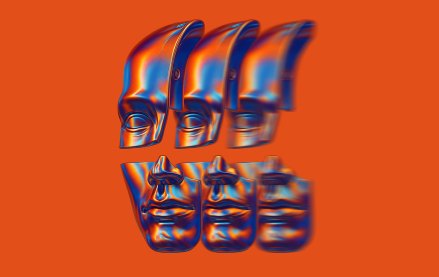Save 50% on a 3-month Digiday+ membership. Ends Dec 12.

Vibe marketing used to be a punchline. OpenAI is turning it into a product strategy.
That probably wasn’t the intent when CEO Sam Altman rolled out a slate of updates at the company’s first developer conference in two years earlier this week, but the subtext was hard to miss: OpenAI wants ChatGPT to be the operating system for everything, from enterprise workflows to toys, and yes, marketing too.
“This is the best time in history to be a builder,” he said. “It has never been faster to go from idea to product.”
Marketers heard it for what it was: both an invitation and a warning. The old model of brand building – anchored in time, headcount and budget – is being outpaced by one defined by speed, automation and access.
For some, it’s a creative unlock. For others, it’s a reckoning.
The conference didn’t have to say as much. It showed it on loop.
Apps that bring companies directly into ChatGPT. Custom GPT-powered agents that handle customer interactions. Lower-cost models for voice and image generation. A new take on short-form video, via Sora 2, that turns prompts into motion. None of these updates were aimed squarely at marketers but they landed like a product roadmap for marketing’s future. And yes, it sounds big, maybe even overreaching.
But that’s the point.
OpenAI isn’t just shipping new tools, it’s redrawing the boundaries of how creative works – and marketing itself – gets made. Sure, AI was already doing that writ large but what OpenAI just announced was a distilled version of it. For marketers that’s both thrilling and disorienting.
“People will outsource truth-finding,” said Maggie Gross, head of strategy and brand practice leader at Deloitte Digital. “Instead of scrolling to judge what is real, they will ask their agent. That makes “the GPT” a new audience. To win it, brand storytelling must be machine-readable and machine-verifiable.”
In practice, that means marketers will need to rethink how they structure the raw materials of their brands. As Gross explained, that includes publishing product fact, policies and safety claims in ways assistants and GPTs can retrieve and cross-reference. It means maintaining a living body of verified assets and disclosures so agents can cite the brand as a reliable source of truth.
Community signals will need to be treated as data inputs for agents, not just people. Verified reviews, service resolutions and inventory should be connected so assistants can resolve a shopper’s intent with confidence, Gross added. Needless to say, marketers aren’t ready for that shift. Most are still focused on the algorithm they know, not the one that’s coming next.
“Teams are testing these models in brainstorms, pitches, and even early-stage campaign work,” said Tammy H. Nam, CEO of AI agency Creatopy. “But beyond the initial wow factor, marketers are already asking tougher questions: how do these tools fit into brand systems, how do they scale within workflows, and how do they deliver results without compromising control?”
No one expects immediate answers. For now, the industry is sitting in the in-between – where every new launch creates as many questions as it claims to solve.
Among them: how do brands balance creative experimentation with data privacy when GPTs sit between user and platform? What happens to brand voice when algorithms start to interpret and, eventually, predict it? Will marketers trust OpenAI’s ecosystem enough to build inside it, or hedge across multiple AI stacks? And if ChatGPT becomes the new front door to the internet, what happens to discovery, attribution and media buying itself?
Most of these questions collapse into four bigger concerns: how to maintain creative quality while cutting costs; how to protect intellectual property and likeness; how to label and verify synthetic media; and how to manage adjacency risks on fast-moving feeds. Again, none of it will be resolved quickly – uncertainty, after all, is the industry’s only constant.
“Vibe marketing and speed to market make it even more important to establish guardrails for customer data protection and raise awareness across customers, employees and stakeholders around first-party data and the context windows these systems have,” said Nicole Denman Greene, vp analyst at Gartner.
Until that happens, the ad industry will keep doing what it does best: building fast, selling faster and figuring out the rest in real time. It won’t be long before agencies launch “prompt labs,” brands spin up their own Sora cameos as digital spokespeople and every conference keynote includes a slide about “marketing at the speed of feeling”.
The irony, of course, is that in chasing the vibe, the industry may end up automating the very thing that made it human – and it may happen sooner than anyone’s ready for.
“In this emerging content ecosystem, automation isn’t the endgame – it’s just the starting line,” said Brook Downton, head of Innovation at entertainment agency Ralph. “The real opportunity lies in how we leverage these tools strategically. For brands, generating assets at scale is a necessary process, but if we don’t pay attention, the brutal truth remains: some content will be good, a lot will be generic and when everything becomes personalized, we risk losing the very differentiation we’re chasing.”
More in Marketing

Agencies push curation upstream, reclaiming control of the programmatic bidstream
Curation spent much of this year in a fog, loosely defined and inconsistently applied. Agencies say they plan to tighten the screws in 2026.

‘A trader won’t need to leave our platform’: PMG builds its own CTV buying platform
The platform, called Alli Buyer Cloud, sits inside PMG’s broader operating system Alli. It’s currently in alpha testing with three clients.

Why 2026 could be Snap’s biggest year yet – according to one exec
Snap’s senior director of product marketing, Abby Laursen talked to Digiday about its campaign automation plans for 2026.








